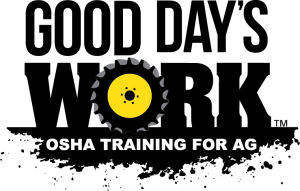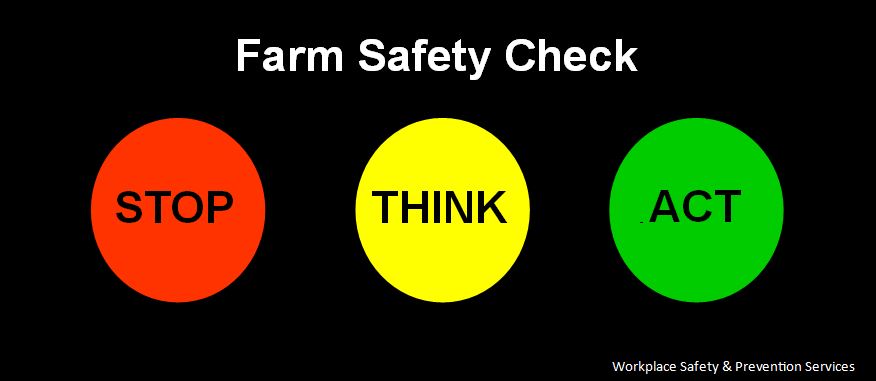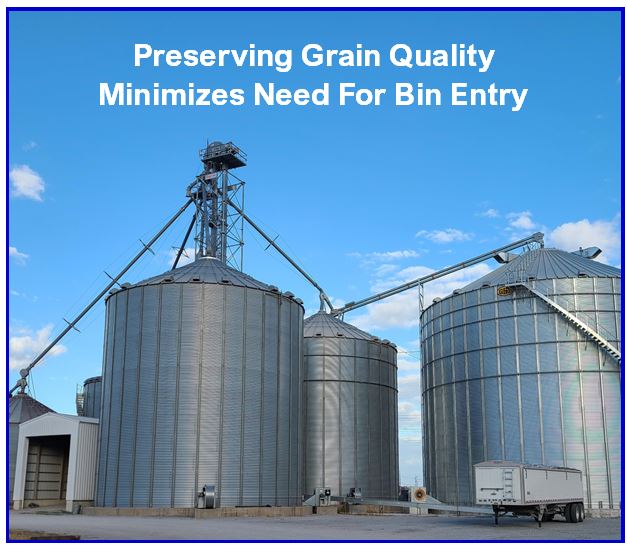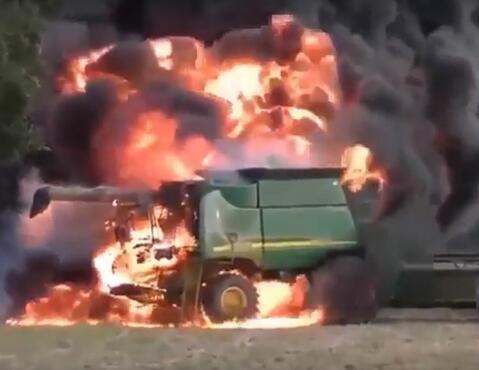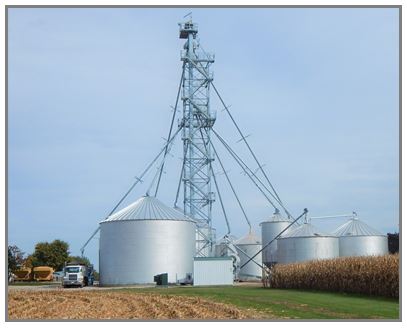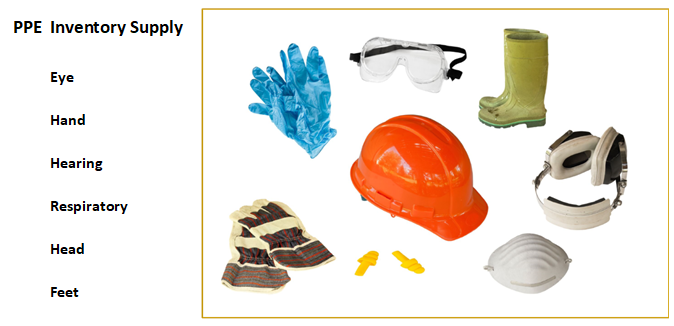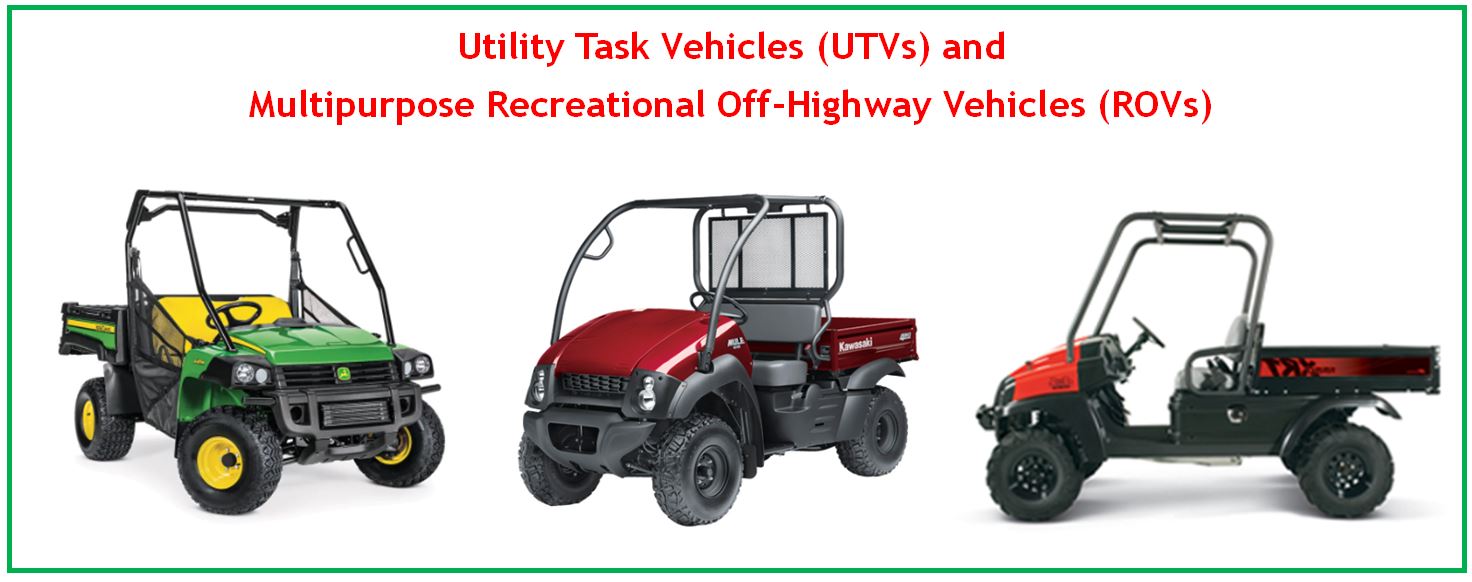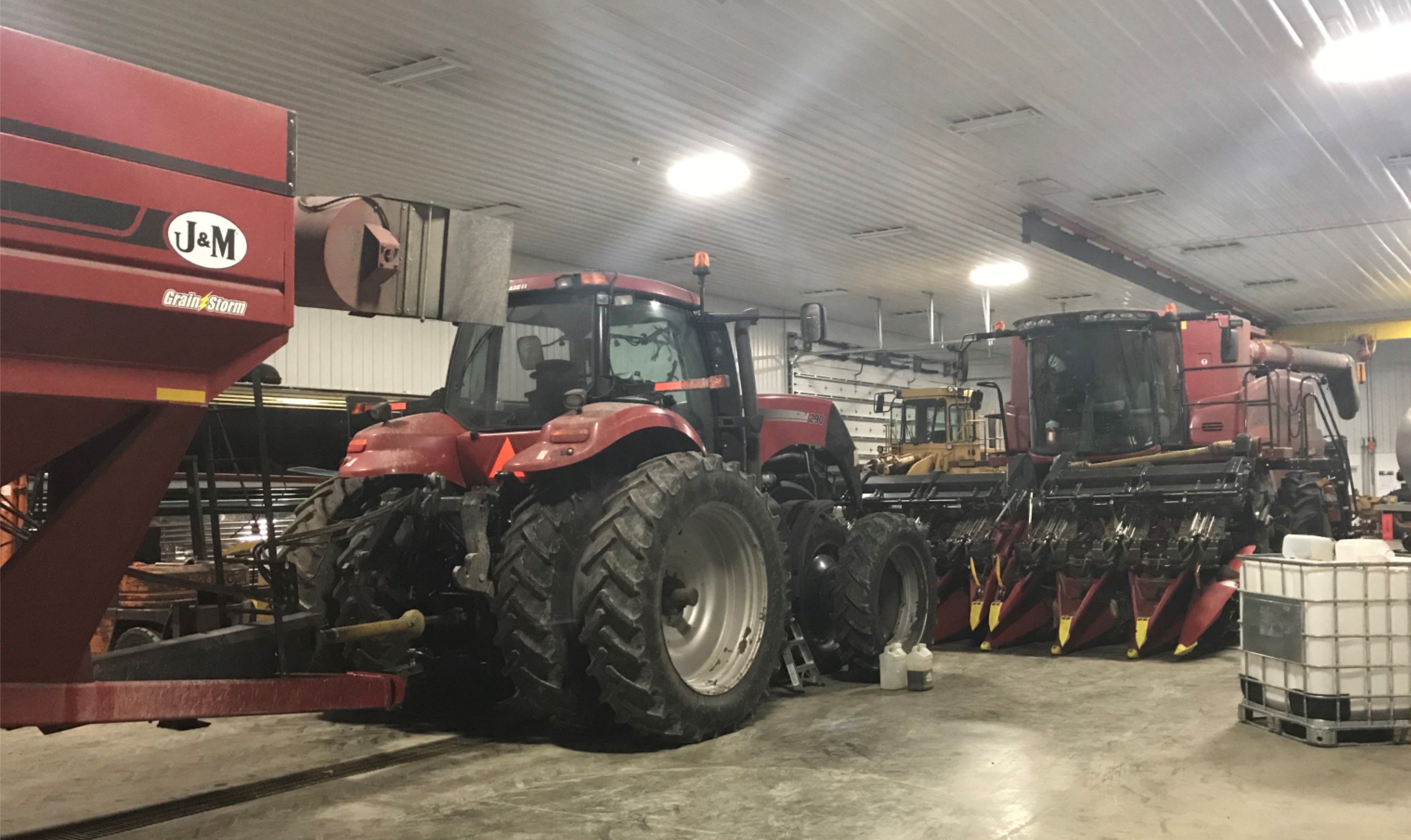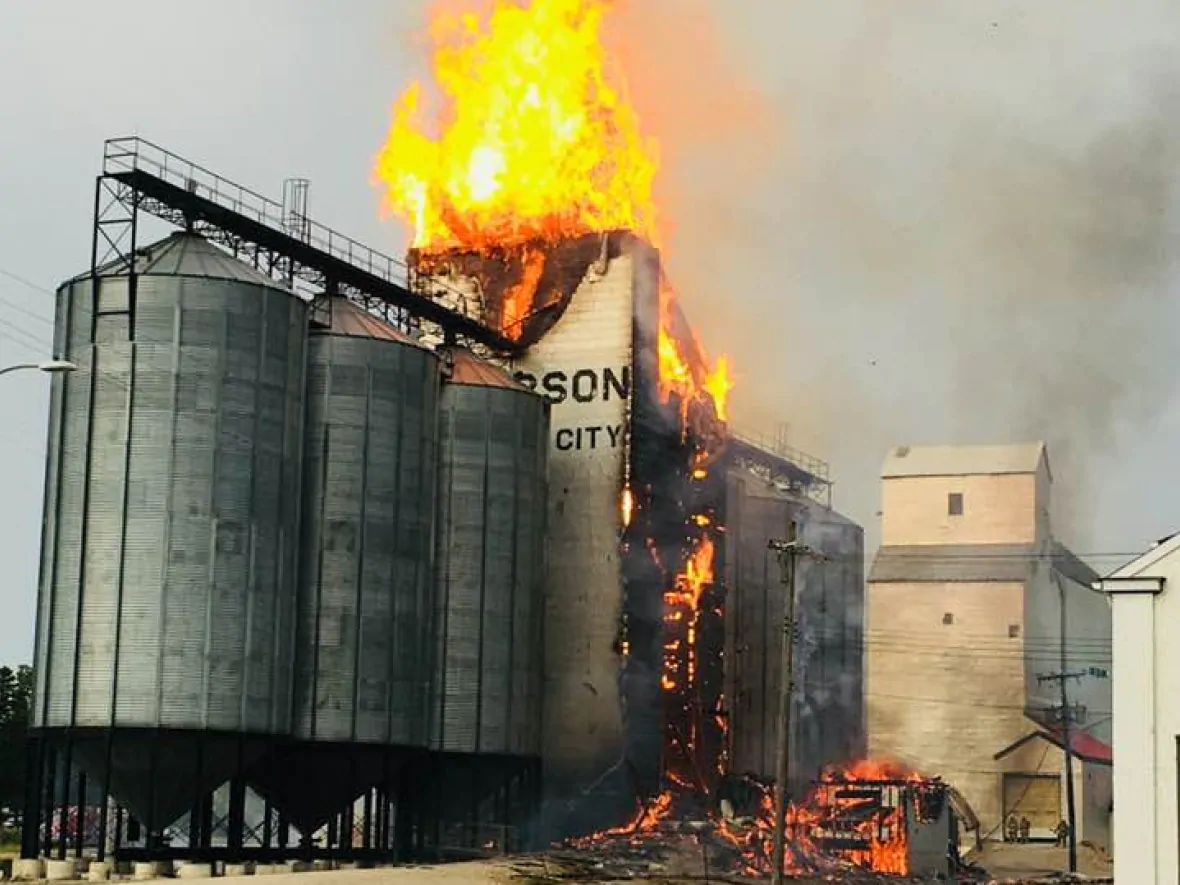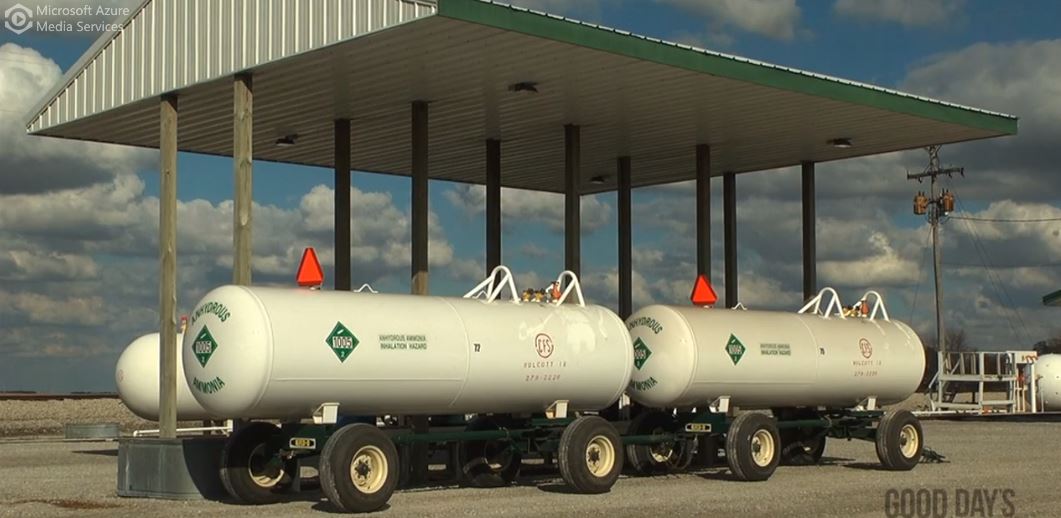Consider this safety tool when addressing a task or chore.
Here's a simple safety tool to consider before addressing a task or a chore to be done. This could be a good topic to discuss at your next meeting. Each statement can have a specific reference to tasks you do in your operation. My two favorites are; "has anything changed and do I have the right tools?" Let's encourage everyone to just stop and think before they begin.
Read More
Topics:
grain bins,
Grain Bin Entry,
grain quality,
grain storage,
farm safety checklist,
grain bin safety,
Poor quality grain,
Checking Grain Bins
Working in and around grain bins exposes farmers and workers to serious hazards, including grain bin entrapment and engulfment. Despite more grain safety awareness, farmers continue to be at more risk due to more on-farm storage, farmers hanging onto their grain longer, and having larger unloading mechanisms that can entrap or engulf someone more quickly. 70% of engulfment happens on the farm. To combat these higher risk growers can utilize good grain storage practices to minimize the need to enter a bin.
Read More
Topics:
coring,
grain quality,
grain storage,
stored grain,
Coring Bins,
Smell Test,
CO2 Monitor,
Carbon Dioxide Monitor
| |
Let’s keep combine fire prevention as one of our priorities as we are abnormally dry in many crop-producing areas. Combine fires cost growers millions in damages each harvest and in a very dry year like this, the potential is even higher. |
Read More
Topics:
fire,
combines,
Combine Fire Checklist,
Maintenance and Cleaning,
Combine Fire Prevention,
Fire Preparedness Checklist ,
Spotters
| Over the next several months' many growers will be harvesting and filling grain bins. A grain bin is a confined space and is also a Permit-Required Confined Space (PRCS), however, on most farms it is not thought of that way. Today I’d like to shed some light on confined space permits to have people more comfortable about the important role it plays in keeping people safe. I will take you through a couple areas of a confined space entry permit. See link; Sample Confined Space Permit |
|
Read More
Topics:
lockout-tagout (LOTO),
Confined Space Permit,
Grain Bin Entry,
Permit-Required Confines Space Permit,
Electrical Safety
August is a good time to take pause and check your inventory of PPE before going into harvest.
No matter what you do, you have a reason to work safely and watch out for the safety of others. Purchase quality products that meet safety standards and are appropriate for work you will be doing. Employees are more likely to wear PPE products that fit well and are comfortable.
Read More
Topics:
farm,
personal protective equipment (PPE),
respiratory protection,
Hand Protection,
Eye protection,
Hearing Protection,
PPE Inventory,
COVID-19
Utility Task Vehicles (UTVs) are common on many farm operations with many uses, attachments and benefits. They can go by a variety of names such as side by sides (SxSs) and multipurpose recreational off-highway vehicles (ROVs) and I'm sure many more. Many if not all also double as a recreational vehicle with high performance features. That being said, power and speed are key components of agricultural injuries and fatalities.
What should you know when having employees operating UTVs in "non-recreational" farm tasks?
Read More
Topics:
safety culture,
farm,
ROV,
Operator Responsibility,
UTV,
Utility Task Vehicle,
Recreational Off-Highway Vehicle,
Rollover Protective Structures,
ROPS
This winter, are you prepared for the "silent killer"? When the cold weather comes and working indoors becomes more necessary, the risk of carbon monoxide poisoning increases. You may keep your equipment running indoors and think, "It's just for a little bit, I'll be okay." But even a little carbon monoxide exposure makes an impact on your body and health. Make sure you and your employees are up to date and trained on how to avoid and respond to this deadly gas.
Read More
Topics:
carbon monoxide
Over the last ten years, grain dust explosions have occurred at an average of 10 explosions per year. You might look at that number and think that grain dust explosions aren't something you need to worry about. However, the magnitude of these explosions can be devastating. These explosions can bring down entire operations, causing injuries and even fatalities. But with prevention, grain dust explosions can be avoided.
Read More
Topics:
grain bins,
dust explosions
Anhydrous ammonia (NH3) is the perfect example of something that's commonly found in agriculture, but is also really dangerous. Because it's so common, people grow very comfortable using and being around it and forget that it's a hazardous chemical.
Anhydrous ammonia causes serious injuries, like severe frostbite, serious burns, blindness, suffocation or lung damage, and even death, all in a matter of seconds. Many injuries can be avoided by properly handling the product and respecting it each and every time you work with it. Personal protection is the responsibility of the employer and the employee.
Read More
Topics:
anhydrous ammonia,
first aid,
personal protective equipment (PPE)
